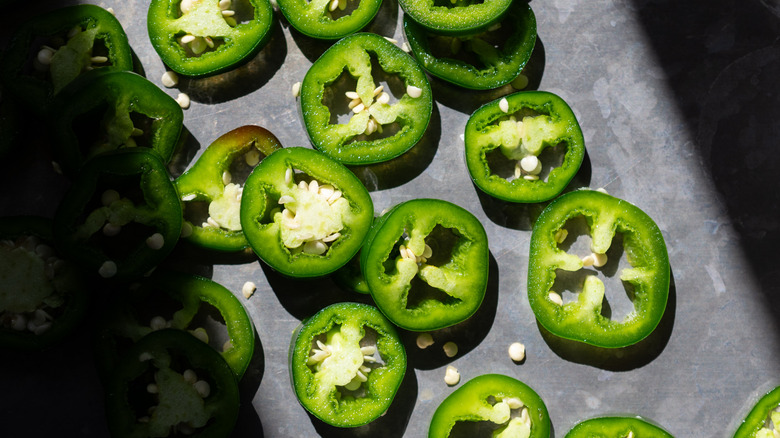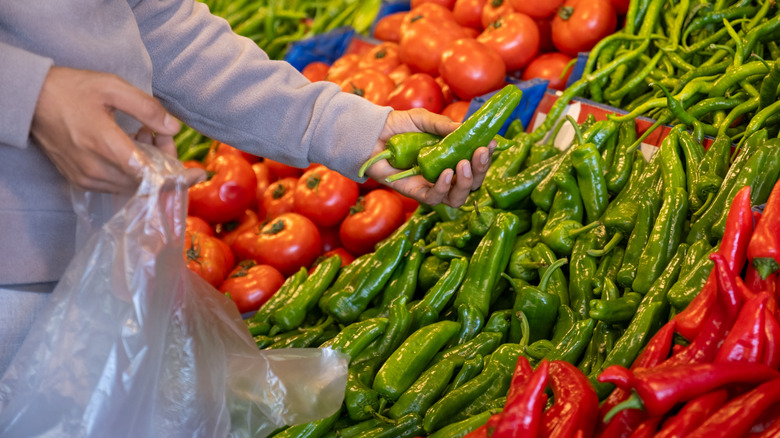Yes, Jalapeños Are Becoming Less Spicy – Here's Why
Growing up in the Southwest with relatives that worked Hatch chili farms, I was no stranger to delicious, burning peppers like jalapeños. Pickled, fried, grilled, or even turned into a spicy jalapeño Takis snack, I came to crave the heat, adding hot peppers to nearly every meal. Jalapeños are a tasty and versatile way to give recipes that extra kick, like adding heat to boring coleslaw, but spice seekers will be disappointed to learn that jalapeños have become less spicy.
This didn't happen naturally — these peppers have lost heat through meticulous research, planning, and breeding because of the lower heat level's popularity. Mexican food may be common in the U.S. now, with an astounding 1 in 10 restaurants serving this cuisine, but demand didn't start to take off until around the 1980s. This lead to higher demand for jalapeños, but growers discovered a problem: There was no reliable way to know how spicy any given crop would be. For home chefs, this might be a fun surprise. But for salsa manufacturers, it meant customers expecting a mild salsa could be unexpectedly blasted with heat. In the 1970s, researchers crossing virus-resistant bell peppers with jalapeños realized they had accidentally created a milder jalapeño. They continued refining its flavor, and in the early 1980s, what's known as the TAM jalapeño was born. Since most jalapeños grown are destined for processing and not fresh consumption, this milder TAM version began to dominate the market.
Spicier alternatives to jalapeños
If you crave spice and heat, all is not lost. As some capsaicin lovers may already know, jalapeños are actually relatively mild anyways — if you find that jalapeños just aren't cutting it, you can always graduate up to serrano peppers. These make a great alternative because they have a fairly similar taste profile to jalapeños, just with more heat. Serrano peppers rate anywhere from 10,000 to 25,000 SHU (Scoville Heat Units), as compared to jalapeños' 2,000 to 8,000 SHU.
Another reliable way to spice up your meal is to use chipotles in adobo. Not only do they have a sweet, spicy, and smoky complexity, they reliably pack quite a bit more punch than your average store-bought jalapeño. Good news for jalapeño lovers: Chipotles in adobo are actually dried and matured jalapeños! As the peppers age and ripen, their color turns from green to red and their capsaicin levels rise. Drying them out only intensifies the flavor — when jalapeños lose water, their concentration of compounds known as capsaicinoids increases relative to the pepper's size. Their Scoville heat rating doesn't technically change, but the taste will still have that extra burn. If all else fails, just go for spice gold and eat habaneros, ghost peppers, or even Carolina reapers — that'll do the trick!

